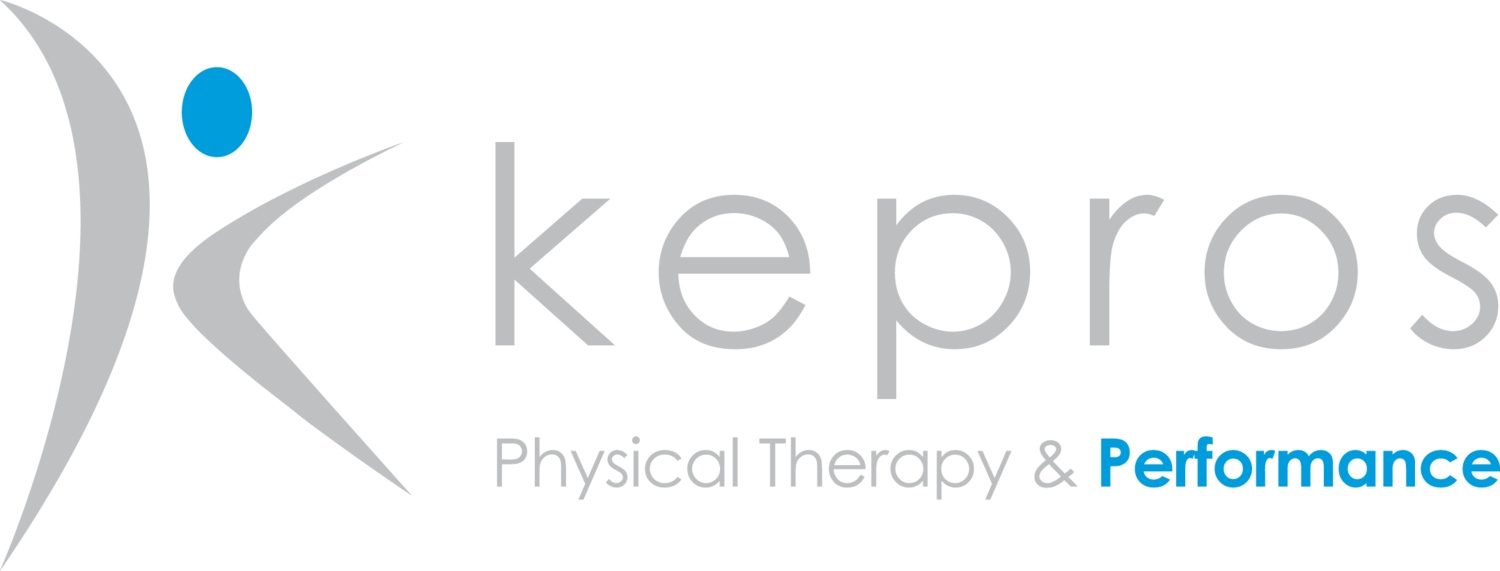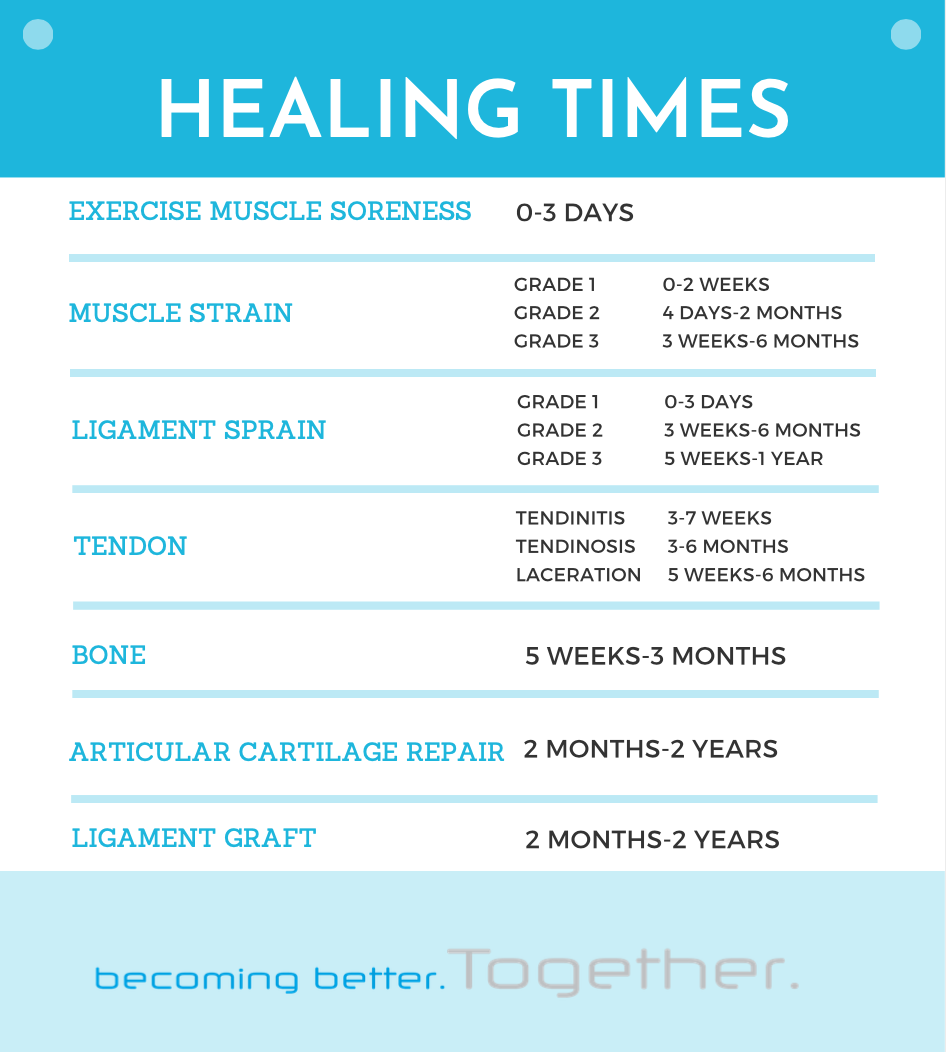Why is Recovery Taking So Long?
We all want to recover quickly following an injury, but there are certain limiting factors that determine the timeframe for full healing to occur. Tissues heal in three distinct, yet overlapping phases, and different tissues may take longer to heal. The recovery time is dependent on the type of tissue (bone, tendon, ligament, muscle), the severity of the injury, age, and overall health status. Here is a list of expected timeframe for healing to occur based on different tissues.
The three primary phases of tissue healing are inflammation, proliferation, and remodeling.
Inflammation (4-6 days):
This is the immediate phase following an injury with an increase in swelling which may or may not be visible. Swelling around the ankle/foot after an ankle sprain or swelling around the knee following an injury to the ACL are two common examples. For less severe injuries, the inflammation may be less obvious and primarily present as stiffness. Inflammation serves as a protection mechanism to protect the adjacent area and minimize risk of further injury. The increase in swelling likely leads to increased sensitivity, and we are likely to limit the use of that body region, muscle, or joint (think holding your arm at your side following a shoulder injury or limping after a leg injury).
Proliferation (4-24 days) –
During the later phases of the inflammation phase, the body will start to rebuild the injured tissue. The inflammation signals the cells in the area to start rebuilding the injured tissue. As the new tissue is built up, it will be different than the previously uninjured tissue. The new fibers will be disorganized and will not be able to function as efficiently with exposure to stress as uninjured tissue would be. This decrease in strength is likely to persist unless we work to specifically reorganize this tissue. No matter how much work is done, there will always be some difference in the new tissue compared to the original, and this is what is often referred to as scar tissue.
Remodeling (21 days – 2 years) –
Once the new tissue is in place, the building blocks are there to begin remodeling so the tissue can withstand all the forces it needs to tolerate for usual function. Our joints, bones, muscle, tendons, and ligaments are constantly adapting to the stresses we expose our body to. The primary goal during this phase of healing is to introduce exercise, movements, and activities that promote strengthening and realignment of the tissue. This is the longest phase of healing and recovery, but the most important to ensure return to full functional ability following an injury.
These phases of tissue healing guide what we can do at any given time point during rehab. We use this understanding to help guide when it is appropriate to return to your activity or sport, and these decisions are based on research and are not arbitrary. Our goal is to make sure you make a full recovery to safely return activity. As always, if you are experiencing pain or an injury, give us a call and we can help guide you through an individualized process to meet your goals.

